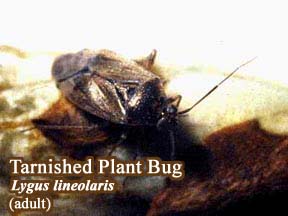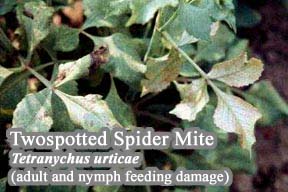Calendula (Calendula)
Plant Health Problems
See Perennials for a detailed discussion of problems that may occur and are common to most herbaceous ornamentals.
Diseases caused by Fungi:
Basal or root rot, Rhizoctonia solani or Pythium spp.
Roots and basal stems are rotted, black or brown and collapsed. Sunken lesions may occur at the soil line. These fungi must be distinguished microscopically. However, Pythium tends to predominate in wet soils and Rhizoctonia in well-drained soils.
Control with fungicides is not reliably effective and may be prohibitively expensive, so removal of infected plants is important.
Gray mold, Botrytis sp.
Flowers in particular may be rotted by this fungus during prolonged humid or wet weather. A gray fuzzy mold follows petal spotting which rapidly rots the flower.
Reducing relative humidity through improved ventilation has proven a useful means of control. Among the compounds registered for use in Connecticut is thiophanate-methyl. Consult the label for dosage rates and safety precautions.
Leaf spot, Cercospora calendulae, Alternaria, or Colletotrichum spp.
Small spots appear which coalesce and progressively destroy leaves, stem, and eventually the entire plant. Most varieties are susceptible.
Among the compounds registered for use in Connecticut is thiophanate-methyl. Consult the label for dosage rates and safety precautions.
Powdery mildew, Erysiphe polygoni, Sphaerotheca fuliginea.
These fungi are obligate plant parasites which grow vegetatively on the plant leaf surface, sending haustoria, structures which absorb food from the host, into epidermal cells. The white mildew seen on the leaf is a combination of vegetative mycelium and spores borne in chains on upright conidiophores. Wind-dispersed mildew spores can germinate without free water under high humidity conditions, and disease is often severe when conditions are humid but dry. Small black over-wintering structures called perithecia are often found in powdery mildew affected areas.
Control may also be achieved with the use of fungicides applied as soon as symptoms are visible. Among the compounds registered for use in Connecticut are potassium bicarbonate, ultra fine oil, sulfur, triadimefon, or thiophanate-methyl fungicides. Consult the label for dosage rates, safety precautions, and directions for use.
Smut, Entyloma spp.
Smuts are diseases caused by fungi. While most smut diseases attack the reproductive parts of plants such as flowers, replacing them with a sooty black mass of fungal spores, smut diseases of perennials often result in light spots on leaves and are called white smuts.
This disease is not typically serious, and usually can be controlled removal of infected plant debris.
Stem rot, Sclerotium rolfsii.
A rot of the crown of the plant, with white cobweb-like mycelium growing over the crown in which are numerous sclerotia the size of mustard seeds, ranging from pink buff to reddish-brown in color.
Infected plants and soil should be removed, and fresh clean soil used as a replacement.
Diseases caused by Phytoplasmas:
Aster yellows, phytoplasma.
The pathogen is a prokaryotic organism without cell walls. It infects the phloem of susceptible plants and causes a general yellowing and dwarfing symptom. The phytoplasma is spread by a leafhopper vector.
Infected plants should be removed and destroyed. Early season control of the leafhopper vector and removal of weed hosts may help prevent re-infection.
Diseases caused by Viruses:
Virus, Cucumber or Tobacco mosaic, Ringspot or Tomato spotted wilt.
A number of different viruses can attack perennials. These viruses are obligate parasites which are not themselves alive, but use plant cell metabolism to replicate and produce more virus. Symptoms of infection are commonly loss or mottling of color, yellowing, yellow rings, stunting, and/or deformed leaves, flowers or buds. Viruses can be transmitted by mechanical means such as touching or rubbing leaves with hands or tools contaminated by contact with diseased plants, by dodder, nematodes, grafting or insects such as aphids, leafhoppers, whiteflies or thrips.
Control is based on starting with virus-free stock or seeds, control of insect vectors, eliminating weed virus hosts, resistant varieties, and eliminating diseased plants.
Diseases caused by Nematodes:
Foliar nematodes, Aphelenchoides ritzemabosi.
This nematode also infests chrysanthemum leaves, and the symptoms are much the same. Water-soaked discolored spots appear first on the undersides of the lowest leaves, quickly penetrate to the upper sides and involve the whole leaf which turns brown and hangs down.
Use of clean uninfested soil is important. Calendula should not follow mums or asters if any infestation has been noted in the previous crop.
Insect Problems:
Blister beetles, Epicauta spp.
These black, elongate, about ½", beetles frequently devour calendula flowers. Occasionally the margined blister beetle, and rarely two or three other species, the gray blister beetle, and the ash-gray blister beetle also injure calendulas. When needed, sprays of methoxychlor, which is among the compounds registered for use against this pest in Connecticut, will control the adults. Consult the label for dosage rates and safety precautions.
 Plant bugs.
Plant bugs.
The fourlined plant bug, Poecilocapsus lineatus, and tarnished plant bug, Lygus lineolaris, lay eggs in soft stems. They hatch about the middle of May and the young bugs suck the sap from the tender leaves. They molt five times and when mature, about the middle of June, they have wings and are nearly 1/3" long. The fourlined plant bug is yellow, marked lengthwise on the wings with four black stripes alternating with three green stripes. The injury to the leaves consists of sunken areas around the punctures. These areas later appear as circular transparent spots and finally as circular holes. The tarnished plant bug is mottled brownish, 1/5" long, with a yellow "Y" shape pattern on its back. These insects injure the new leaves of many different kinds of annual and perennial plants and shrubs. There is one generation each year of the fourlined plant bug and two to five generations yearly of the tarnished plant bug. The nymphs can be managed by spraying with ultra-fine horticultural oil, insecticidal soap or malathion, which are among the compounds registered for control of this pest in Connecticut. Consult the labels for dosage rates and safety precautions.
 Twospotted spider mite, Tetranychus urticae.
Twospotted spider mite, Tetranychus urticae.
These mites infest the undersides of the leaves, which become light yellow in color, and the plants have a generally unhealthy appearance. Sometimes the mites form webs, which more or less enclose the upper as well as the lower leaf surface. Among the compounds registered for control of this pest in Connecticut are insecticidal soap and ultrafine horticultural oil. Spraying with insecticidal soap will give sufficient control if applied at least twice at 7-10 day intervals. The predatory mite, Neoseiulus fallacis, is most commonly found feeding where there are mite infestations. A single application of ultrafine horticultural oil (1/2 -1% dilution) can be effective if predatory mites are present. Take care with soap or oil to obtain thorough spray coverage, because they only work on contact. Abamectin is an effective restricted use product. Consult the labels for dosage rates and safety precautions. Avoid applying carbaryl or pyrethroids, which tend to be much more toxic to the predators than to the pest spider mites.
Thistle butterfly or Painted lady, Vanessa cardui.
The caterpillars feed on the leaves of calendula, at first under a web, then on the upper leaf surface. Sometimes it webs together two or more leaves and lives inside. It reaches a length of about 1 1/4", and varies from light green to light brown mottled with black, with a light dorsal stripe and with a yellow stripe along each side. It is covered with grayish spines. The butterfly has a wingspan of about 2 1/2" and is orange red with black and white markings. This butterfly has two generations in the northern states. Control is seldom required.
Whiteflies, Trialeurodes vaporariorum, Bemisia spp.
The greenhouse whitefly, Trialeurodes vaporariorum, the sweetpotato whitefly, Bemisia tabaci, and silverleaf whitefly, Bemisia argentifolii, commonly infest many kinds of plants under glass and are often carried into the field where they may persist on the plants. The life cycles of these species are similar. The tiny, white, moth-like adult has a mealy appearance due to the small particles of wax that it secretes. It lays groups of eggs on the underside of leaves. The eggs hatch into small oval crawlers, which then settle down and become scale-like nymphs that suck sap from stationary locations on the leaves. These then spend about 4 days in an immobile pupal stage before becoming adults. About 5 weeks are required to complete the life cycle in the greenhouse.
Yellow sticky traps are an effective way to monitor populations of whiteflies, and may even be attractive enough to reduce minor infestations. Biological controls can be also be effective against whiteflies, especially in a greenhouse environment. The predatory ladybeetle, Delphastus pusillus, specializes in whiteflies and feeds on all three whitefly species. The parasitoid, Encarsia formosa, can control the greenhouse whitefly, but not the other species, in the greenhouse. Another parasitoid, Eretmocerus californicus, attacks all three species and can assist in controlling minor infestations in the greenhouse. Insecticidal soap or ultra-fine horticultural oil, which are among the compounds registered for control of this pest in Connecticut, sprayed on the undersides of leaves, can be used against whiteflies in the greenhouse or the field. When applied at a low, half-percent concentration, soap is selectively toxic to whiteflies rather than parasitic wasps. Azadiractin (neem), also directed to the undersides of the leaves, can also be used. Repeat applications of sprays will probably be needed because some stages in the life cycle are dormant and not affected by insecticides or other sprays. Consult the labels for dosage rates and safety precautions. Chemical control using conventional insecticides is difficult because of widespread insecticide resistance.

